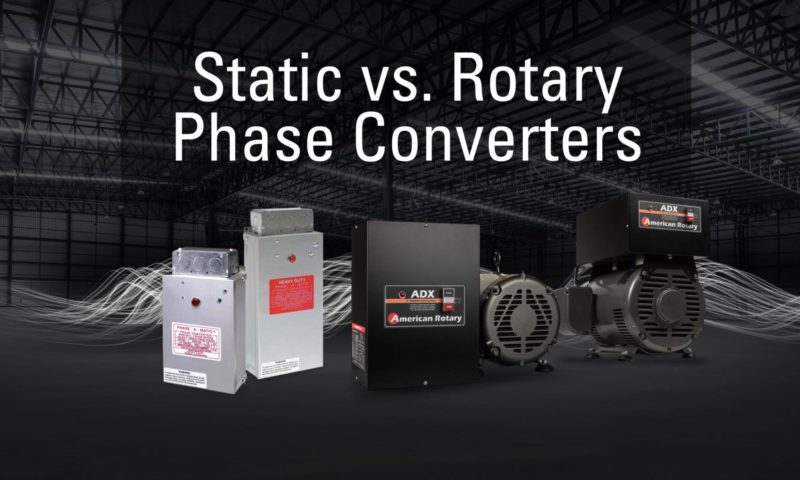Static and rotary phase converters both turn standard single-phase electricity into three-phase power for heavy-duty equipment. The difference is that a static phase converter will start a three-phase load, but run it under lower power, while a rotary phase converter creates continuous, well-balanced three-phase power.
Why would you need to convert single-phase to three-phase power? Single-phase power is the common residential and light-commercial variety supplied by utilities, used in places with smaller electricity loads requiring less power. Three-phase utility service is used in large industries, factories, and in manufacturing units where a large amount of power is required.
But here’s the problem. All kinds of equipment require three-phase power: machines for woodworking, metalworking, CNC machining, foodservice, and farming, milling machines, and lathes just to name a few. A lot of this equipment exists in areas that don’t already have three-phase utility service. And getting it installed is enormously expensive.
So, what do you do? You get a phase converter, that’s what. There are two main types of these helpful devices: static phase converters, and rotary phase converters.
To determine which type you need for your application, you first need to understand the difference between the two. This article will help you understand that, as well as your main considerations so that you can make a smart decision.
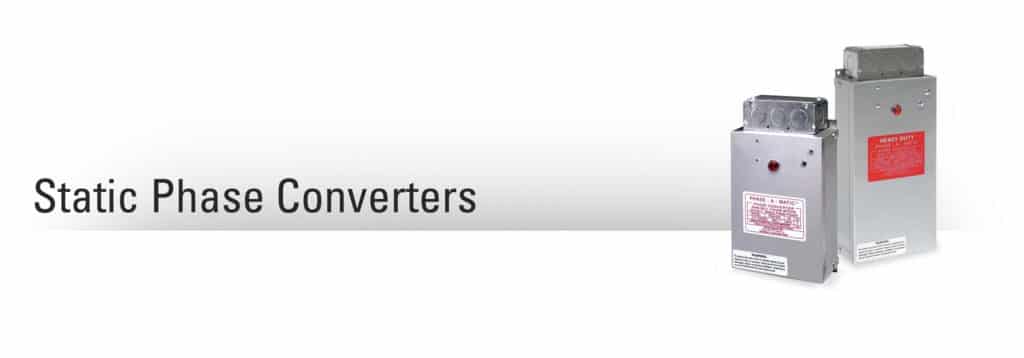
Static Phase Converter
So, what is a static phase converter? The straightforward static phase converter will start a three-phase load but run it only under single-phase power, limiting the load to about 2/3 of its rated capacity.
Capacitors help start the three-phase motor, but then are disconnected once the motor is up to speed. At that point, the system is effectively only running lower single-phase power.
A static phase converter, although it is a simple and relatively low-cost way to start a three-phase load with single-phase power, is not usually suitable for heavy-duty three-phase equipment.
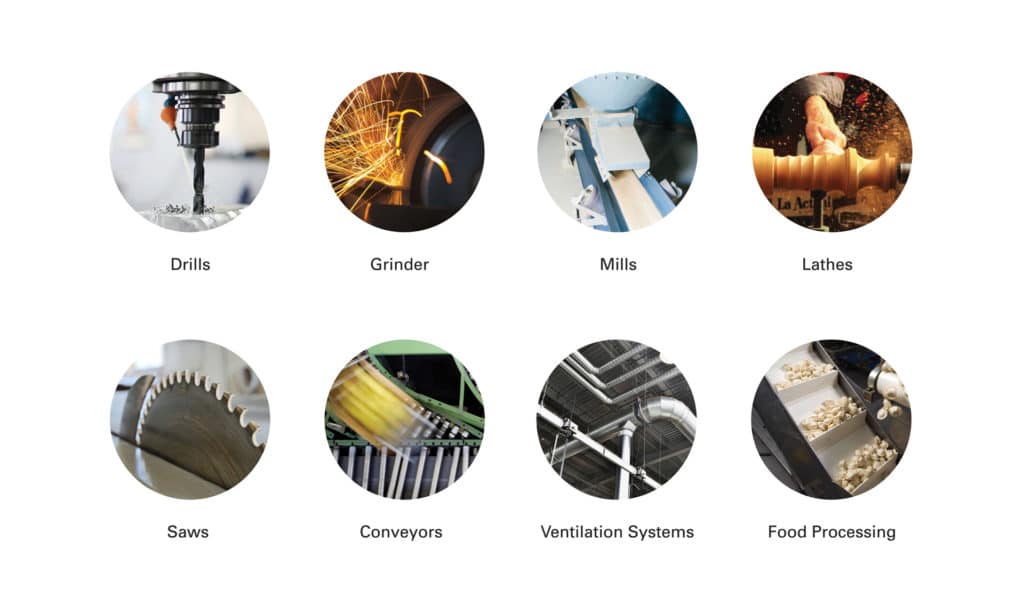
Common applications tend to be limited to lighter-duty types of:
- Drills
- Grinders
- Mills
- Lathes
- Saws
- Conveyors
- Ventilation systems
- Various food processing equipment
Many other types of equipment—vacuum pumps and air compressors being two prime examples—cannot be run at all with a static phase converter. If you decide to go with a static phase converter, make sure that it’s compatible with the power needs of your equipment. Feel free to contact American Rotary for help.
Power Distribution
When a static phase converter motor disconnects after starting up your equipment, you’re left with only two “legs” of power distribution. This is the reason the load must be limited to 2/3rds of its rated capacity.
Potential of Control
Potential of control refers to what you can power with a phase converter. In the case of a static phase converter, due to the inherent limitations we’ve already cited, only one piece of equipment can be managed at a time.
Reliability
As noted before, with a static phase converter you’re running equipment at limited power. Run up against these limits, and you risk damage due to overheating.
In cases where you only need the higher power for startup of the machine, then you may be able to rely on a static converter for your needs. In other cases, you’ll ensure greater reliability with a rotary phase converter, which we’ll discuss next.
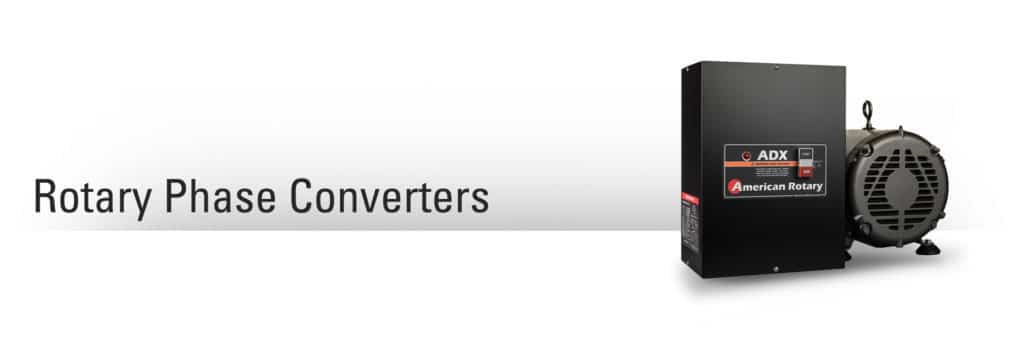
Rotary Phase Converter
Unlike a static phase converter, a rotary phase converter is a more sophisticated unit that creates true three-phase power, often more precise than utility-supplied three-phase power.
Power Distribution
A rotary phase converter adds a small idler/generator motor (more on this in a moment) and control panel to the design, which gives you continuous three-phase power. This makes it a cost-effective option to provide three-phase utility to your shop.
Potential of Control
One of the biggest differences with a rotary phase converter is that, depending on the size of the system, you can run several pieces of three-phase equipment at a time. Rotary type converters are much better suited to large equipment and shops with multiple machines such as welding equipment, ovens and various woodworking machinery.
Reliability
By supplying continuous three-phase power, a rotary phase converter is a reliable source of balanced power for your equipment. You can safely and reliably run several pieces of equipment at once.
What is the Idler Motor?
The idler/generator motor is the key to a successful rotary phase converter. In combination with a control panel, the idler supplies the continuous three-phase power.
You might have heard that an idler tends to draw a huge inrush current upon start-up, which can cause problems such as demand charges and large increases on power bills. But with all American Rotary phase converters, we use a custom-designed induction generator as our idler that solves this problem decisively.
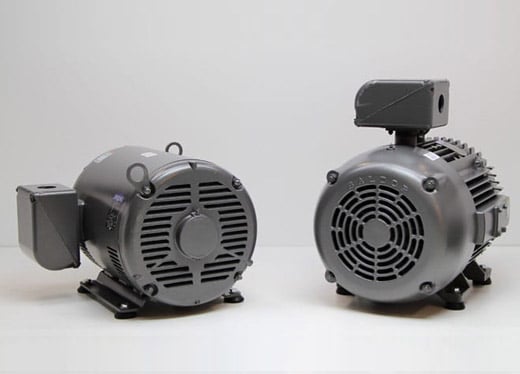
Our VIT Induction Generator is a true soft start idler that uses 1/3 of the inrush current of a comparable three-phase motor—allowing you to run the phase converter 24/7 at little to no load without any negative effects. These idlers run very smoothly, quietly and efficiently.
Related Resource
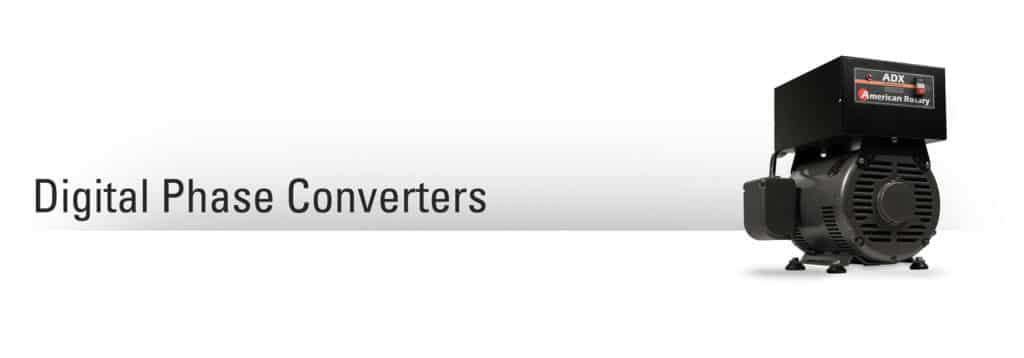
Digital Phase Converter
There’s some variation in the marketplace regarding what the term digital phase converter means.
This term sometimes refers to a solid-state phase converter, a patented design that uses a series of variable frequency drives, also known as vfds, with capacitors to provide three-phase power. In many other cases, the term refers to a rotary phase converter that is digitally controlled.
Power Distribution
Both the complex solid-state phase converter design and digitally controlled rotary phase converters can provide precise three-phase output that can run multiple loads at a time.
Potential of Control
Solid-state phase converters can safely power virtually any three-phase load within its rated capacity—pumps, irrigation systems, machine tools, sawmills, elevators, HVAC and CNC machines.
Digital rotary phase converters also produce balanced power that’s clean enough to run multiple voltage-sensitive loads such as a CNC machine, welder or any other computer-controlled load.
Reliability
Voltage balance is crucial because voltage variations over 5% can damage some equipment, especially CNC machines.
The complex solid-state phase converter design is capable of providing a precise voltage balance of 1% or better. But these systems also have some reliability drawbacks: the models currently available come with only limited warranties, and they can be difficult and expensive to troubleshoot due to their complexity (100’s of internal components).
Some digital rotary phase converters, meanwhile, can approach the level of precision provided by solid-state converters. Digital rotary phase converters from American Rotary, for example, feature our patented MicroSmart Controller, which monitors your voltage every millisecond to help provide precise voltage balance at 1-5% and can be custom balanced in the field to meet the needs of your equipment
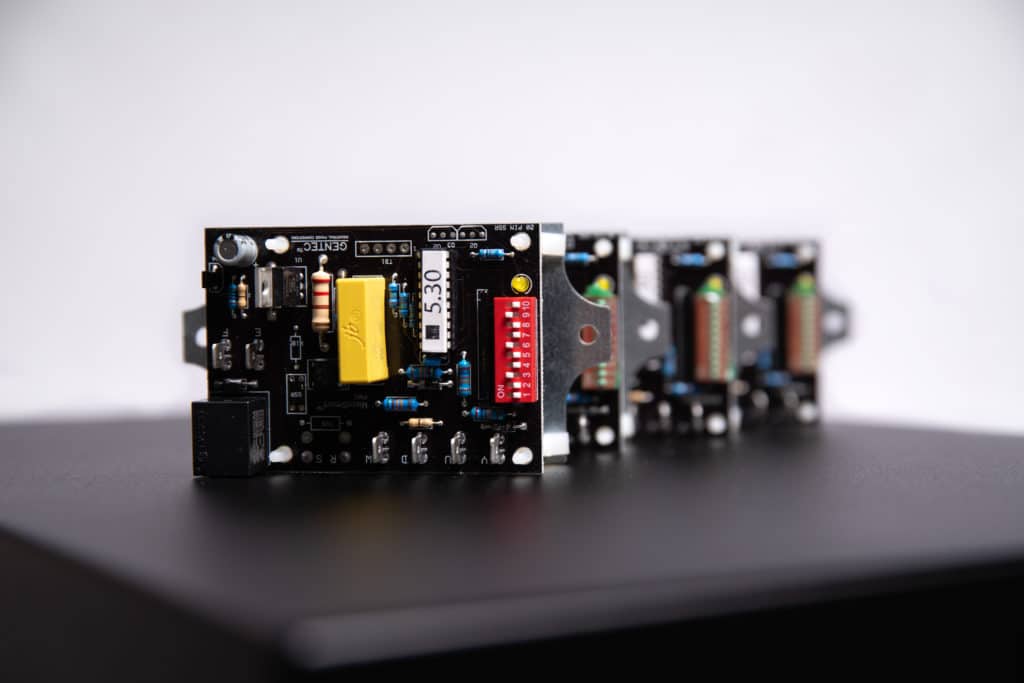
In addition, American Rotary digital phase converters have been designed and built for longevity, backed by a lifetime warranty with little maintenance required. In the rare instance that there would be a problem, most issues can be resolved quickly over the phone. The life expectancy of a rotary converter far exceeds that of a solid state converter, proven by the many units that have currently been in the field for over 20+ years.
Which is Best for You?
Static phase converters, although they come with power limitations, can be a simple solution if you have a lower horsepower requirement for a single piece of equipment. For higher power or multiple machines, you’ll want a rotary phase converter or even a solid-state phase converter to keep your equipment running safely and efficiently.
The best thing to do before you pick a phase converter, however, is to consult an expert. The American Rotary team is committed to helping you determine your best solution, so don’t hesitate to get in touch with us today!



